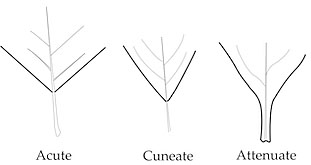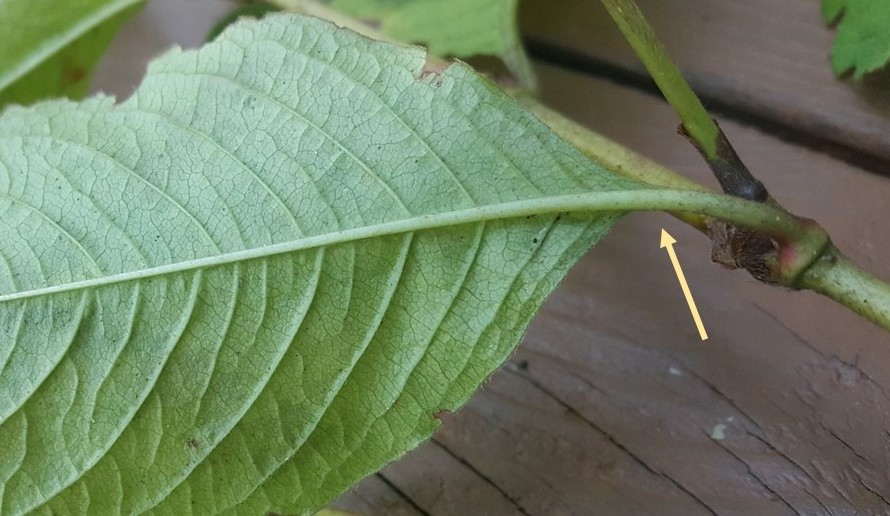Update on Knotweed
Identify the Non-native Bully from the Native Aggressor
By Ann M. Mason, Fairfax Master Gardener
In 2020, we published an article about plants in the family Polygonaceae (smartweeds and knotweeds), the buckwheat family. All members of this family have simple alternating leaves with one leaf per node, a thicker section on the stem at each leaf joint and the leaf base forms a kind of membranous sheath, where the leaf joins the stem. Many knotweeds were in the genus Polygonum sp. but reclassified into other genus, including Persicaria sp.

Persicaria virginiana
A reader questioned whether the example plant pictured in the article, a knotweed Persicaria virginiana, was a native or non-native plant. Some sources on the Internet have photos and information that claim this plant is native. Knotweeds are invading Mid-Atlantic gardens and forests. Having a method to distinguish among these knotweeds allows gardeners to eradicate the unwanted varieties AND to avoid planting the non-native ones in the first place.
In this article, we use this question to demonstrate the use of a dichotomous key. A dichotomous key is a sequential series of questions whose answers lead to other questions. Using this type of decisional key can help the gardener narrow down a plant to its specific botanical name. In our case we search to identify whether the plant in Figure 1 is the native or non-native plant.
J.M.H. Shaw from the Royal Horticultural Society published a dichotomous key in 2008 to identify various members of the genus, Persicaria virginiana.
| Key to cultivated forms of Persicaria virginiana | |||
| 1a. | Leaves ovate, acute to rounded, not attenuate at base; lateral veins 7-9 pairs; flowers green to white, rarely pink to red. North America | Go to Q2 | |
| 1b. | Leaves ovate, base acute to cuneate, attenuate, lateral veins 7-13 pairs; flowers red rarely white. Eastern Asia | Go to Q3 | |
| 2a. | Flowers green to white | var. virginiana f. virginiana | |
| 2b. | Flowers pink to red | var. virginiana f. rubra | |
| 3a. | Leaves with dense long hairs | var. kachina (not in cultivation) | |
| 3b. | Leaves with scattered short hairs | Go to Q4 | |
| 4a. | Flowers red | var. filiformis f. filiformis | |
| 4b. | Flowers white | var. filiformis f. albifloria | |
Question 1 [1a. and 1b.] identifies the key characteristics between the native and non-native plant — the way the leaf tapers to the petiole, the leaf stalk. The base of the leaf has various shapes, including acute, rounded, cuneate, attenuate, oblique and more. The term attenuate means the leaf tissue tapers toward the base and has a fleshy part of the leaf on either side of the petiole.

Leaf Bases Referenced in the Key
Plants having attenuate leaf bases are grouped in Q1b. associated with Eastern Asia origin. Plants that do not have this fleshy part of the leaf at the petiole are grouped in Q1a. having North American origin. The plant in question appears to have an attenuated leaf attached to the petiole.

Attenuated (Arrow Identifies the Leaf Base to the Petiole)
In our example plant, the leaf venation contains more than 9 pairs of parallel lateral veins — another indication of a non-native plant. This moves us to Q3; the plant does not appear to have dense hairs. This answer moves us to Q4 the color of the flowers — red or white — and importantly to a second dichotomous key to further identify plants identified in groups 4a and 4b. Our example plant appears to have red petaled flowers surrounded by red calyx. To further distinguish the forms of Persicaria virginiana var. filiformis, Shaw continues identification with a second key and second set of questions.
| Key to cultivars of Persicaria virginiana var. filiformis | |||
| 1a. | Leaves variegated | Go to Q2 | |
| 1b. | Leaves not variegated, all green or with a dark red to brown chevron stripe | Go to Q3 | |
| 2a. | Chevron marking entirely absent | ‘Variegata’ | |
| 2b. | Chevron present as pale pink-brown fragmented zone | ‘Painter’s Palette’ | |
| 3a. | Chevron red, enlarged to occupy upper ¾ of leaf | ‘Compton’s Red’ | |
| 3b. | Chevron dark brown, restricted to midway along leaf, margins irregular | Go to Q4 | |
| 4a. | Leaves light green, with pale red-brown chevron | ‘Moorland Moss’ | |
| 4b. | Leaves dark green, with dark red-brown chevron | ‘Lance Corporal,’ ‘Batwings’ | |

Flower stalk of example
Our example plant has green, non-variegated leaves (Q1b) and its chevron, the characteristic V-shaped marking, is restricted to midway along the leaf (Q3b). The colorful ovoid middle green leaves with their chevron marking are one of the attractive features of this plant.
Using Shaw’s dichotomous key, the knotweed, in the earlier article (September 2020) is better identified as Persicaria virginiana var. filiformis ‘Lance Corporal.’ Shaw reports that ‘Batwings’ is very similar to ‘Lance Corporal’ but has “a more lanceolate leaf apex and contrasting dark chevron.” Shaw reports ‘Painter’s Palette’ as having “leaves variegated with gold with the central chevron rather irregular of pale pink-brown.” In the example plant, the leaves are not variegated and the chevron is not pale.
Bottom line: The Internet contains a lot of conflicting and confusing information about plants associated with the scientific name Persicaria virginiana. Both native and non-native plants carry this scientific name. To distinguish the native Persicaria virginiana from the non-native plant requires a close examination of the leaf base to identify whether it is attenuated. The gardener cannot go by flower color alone since both native and non-native varieties have white flowers. Similarly, the presence of 7-9 pairs of veins does not distinguish between native and non-native. But plants with 10 or more veins are characterized as non-native. As a result of the use of the dichotomous key, we conclude that the example plant is indeed a non-native, Persicaria virginiana var. filiformis, and is likely to be the ‘Lance Corporal.’ We thank the reader for their question and the opportunity to demonstrate the use of the two-question dichotomous key.
In my garden, this non-native perennial knotweed requires persistent hand removal of the crown and roots to keep its aggressive spread under control. In August, it sends up a slender wand-like stalk. Tiny red flowers with white stamens and pistils emerge in late August and early September in my garden. These flowers turn into bright red fruit containing seeds that can leap several feet when the stalk is disturbed in the autumn — one reason it multiplies.
Virginia Tech reports that pre-emergent herbicides are effective if applied in the late fall, winter or early spring before the weed seeds germinate, and there are a few post emergent herbicides containing dicamba that can work. Before using any herbicide, do your research to select the proper product and read herbicide labels before any application.
Resources
• The Family Polygonum: Smartweeds and Knotweeds, Ann M. Mason, Fairfaxgardening.org
• New Names in Persicaria virginiana, J.M.H. Shaw, RHS Garden Wisley, Hanburyana 3: 3-9
• Leaf Bases, Woody Plants Tutorial, Natural Resources and Environmental Sciences, University of
Illinois-Urbanna-Champaign
• Polygonium virginiana, Lady Bird Johnson Wildflower Center, University of Texas at Austin
• Persicaria virginiana, Missouri Botanical Garden